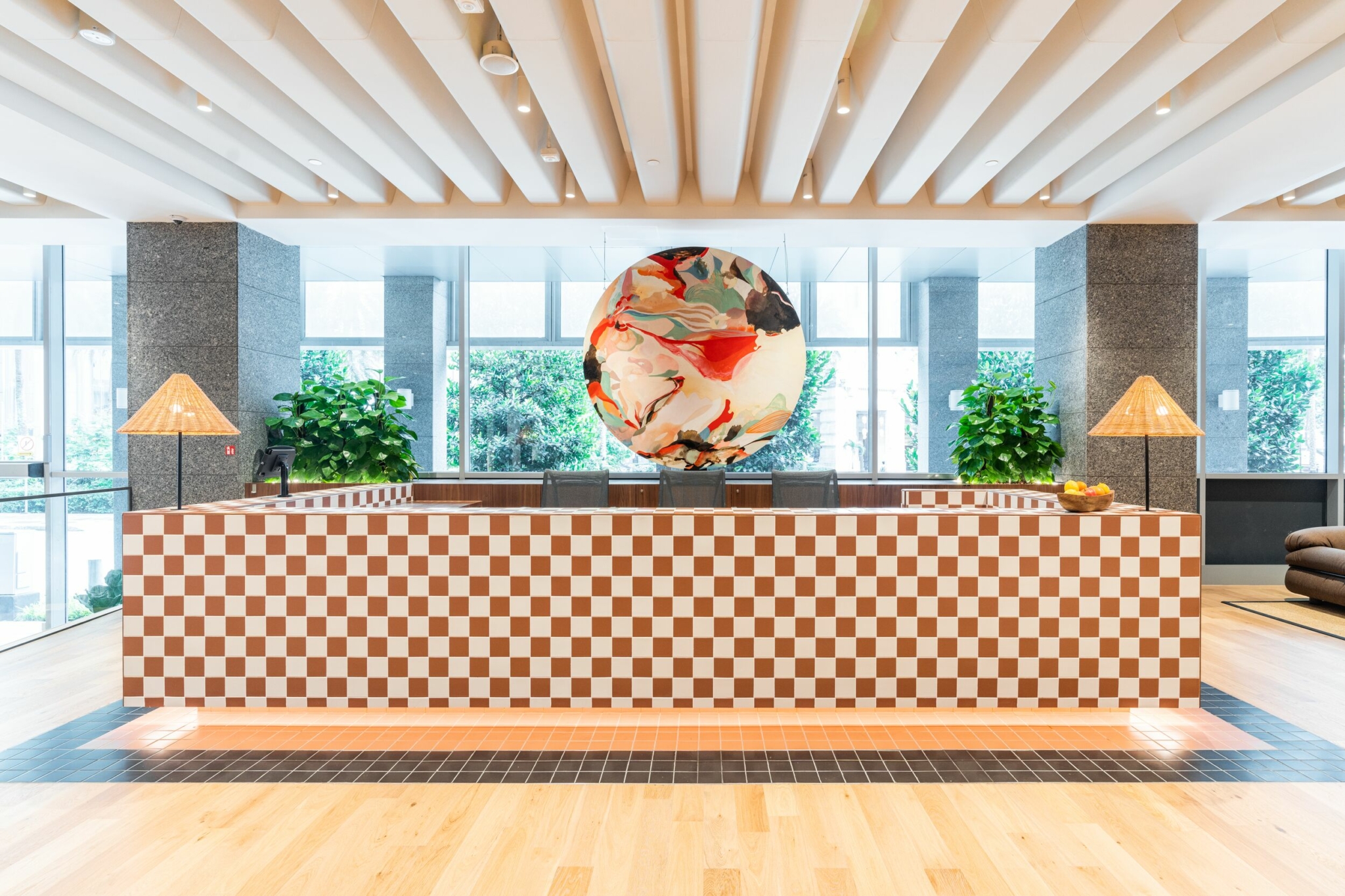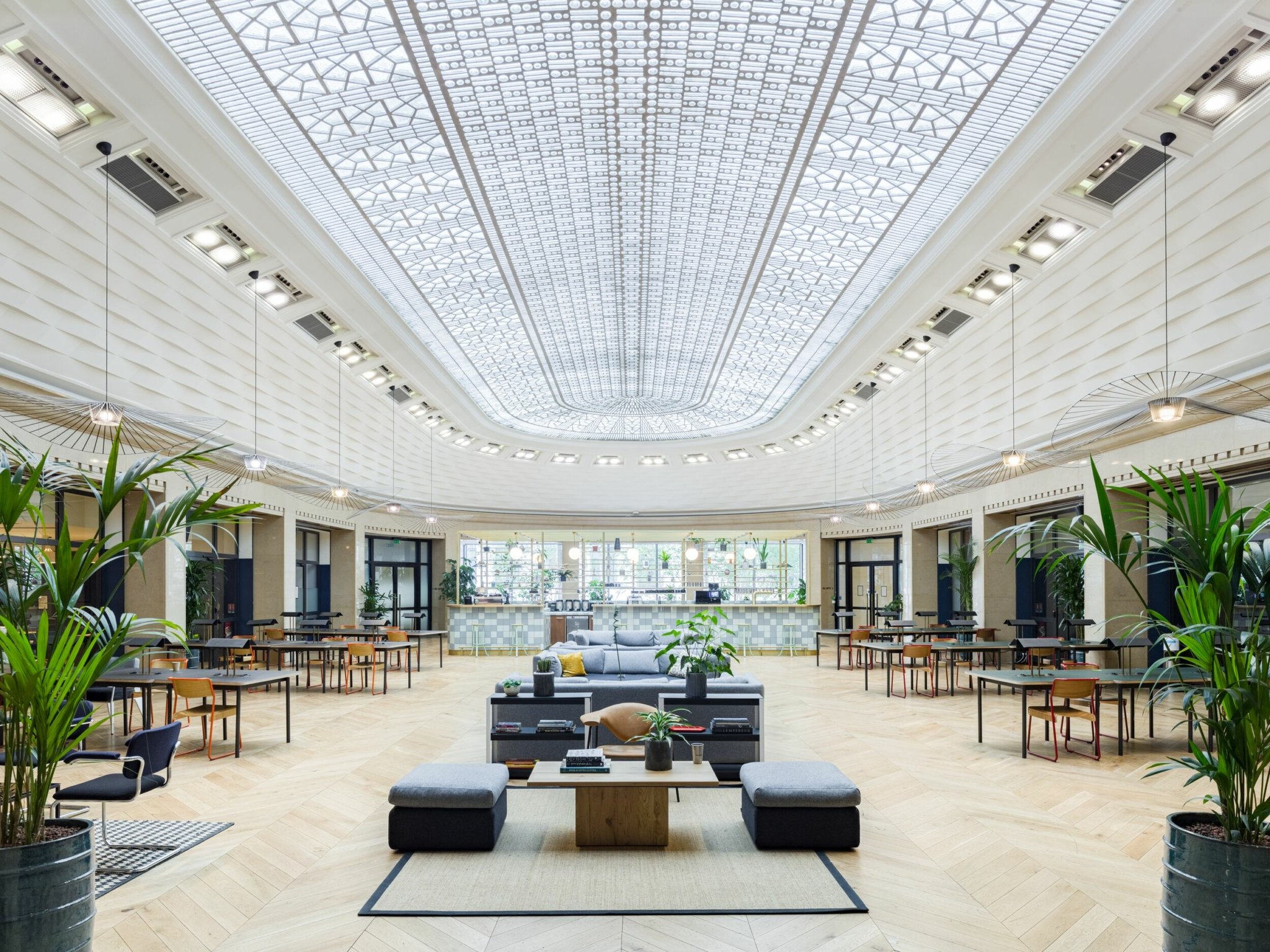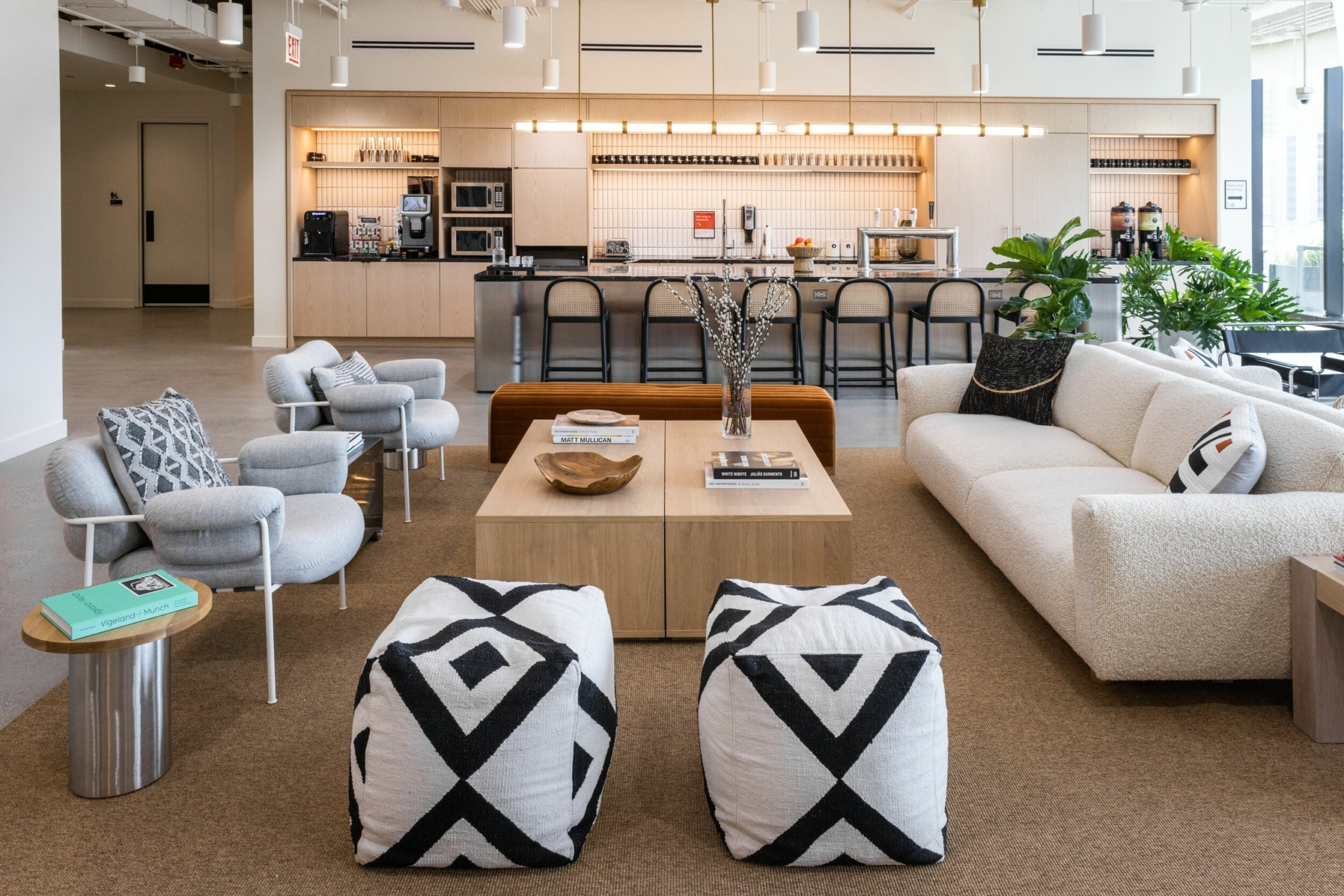Draping your office in greenery brings with it a slew of benefits, including enhanced employee happiness, increased productivity, and heightened engagement. Office spaces, shopping centers, hospitals, and hotels alike strategically use indoor plants to reduce stress and transform what is ordinarily a sterile, utilitarian environment into something living and breathing.
Yet in maintaining these walls and floors of indoor plants, ongoing care and attention is required—alongside a solid dose of expertise. Ultimately, you want to choose plants that are well suited to an indoor office setting, and that won’t require fiddly, heavy-handed maintenance.
Whether you’re an office manager starting to dabble in greenery or a desk dweller looking to freshen your day-to-day, this guide to selecting and caring for office plants will bring your workspace to life.
At a glance: best office plant ideas
This guide offers instructions for growing and caring for a number of low-light, low-maintenance office plants. Our top recommendations for your workspace include:
- Snake plants
- ZZ plants
- Succulents
- Pothos
- Bamboos
- Spider plants
- Anthuriums
- Weeping figs
- Peace lilies
- Ferns
- Philodendrons
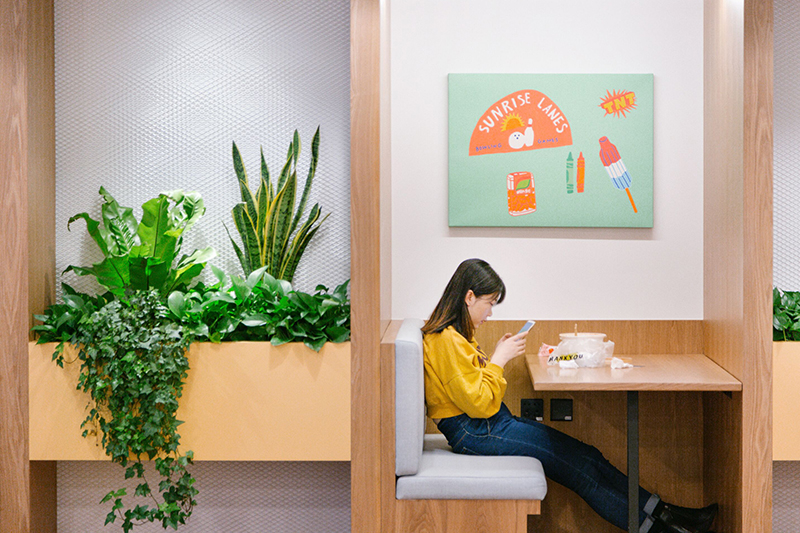
Low-light office plants that don’t need direct sunlight
Even the most modern, open office environments can struggle with natural light, particularly in big cities where buildings are side by side and the light might be obstructed by shadow or smog. While office greenery is an easy and effective way to enliven these conditions, finding plants that can grow without direct sunlight can be a challenge.
Snake and ZZ plants are widely praised by cubicle dwellers as hardy, low-light plants that will survive in any office environment. Both have succulent, rubbery leaves and require very little attention.
Snake plants
Snake plants grow in a vertical, compact fashion, reducing mess and taking up a neat corner on a desk or in an office. (Some can grow several feet tall, so pick your size wisely.) Let the soil dry completely between waterings; in the wintertime you’ll likely need to water a snake plant only once a month. While these plants flourish in indirect sunlight, they will also grow successfully (albeit a little more slowly) in darker, low-light settings.
ZZ plants
The ZZ plant evokes feelings of paradise, with fern-shaped leaves in a deep, succulent green. However, low light suits the ZZ plant best, a species that hates direct sunlight and requires extra watering when placed too close to windows.
The ZZ plant will grow up to several feet in office lighting at a regulated temperature of between 60 and 75°F. Water your ZZ plant only when the soil becomes dry to the touch, and it’s important to ensure that there is sufficient drainage at the bottom of the pot to reduce the risk of rot.
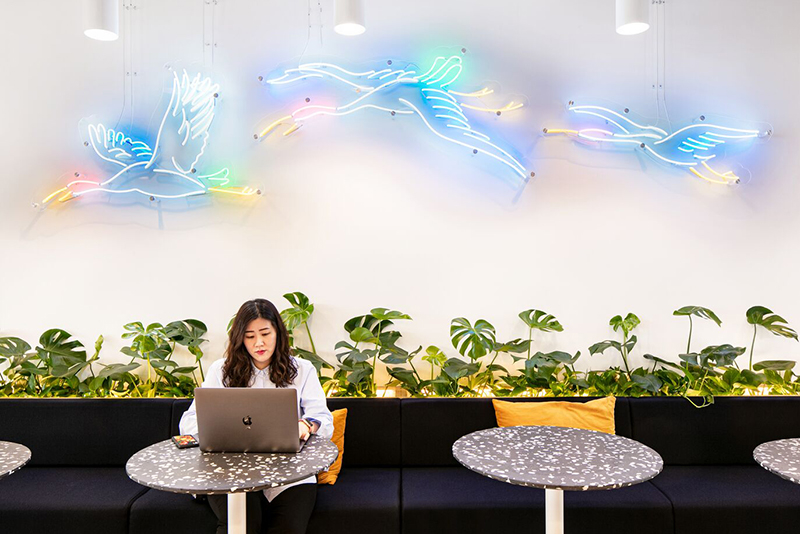
Desk plants that are easy to care for
When you’re looking to spruce up your personal space, turn to popular desk plants like bamboos and spider plants; both require some care in watering but are able to survive in low light on desks, in bathrooms, and on kitchen counters. For a pop of color, try anthuriums, which are more durable than orchids and flower year-round.
Bamboos
Choosing a healthy bamboo plant from the outset is key to its survival in an office environment. Opt for a plant that’s bright, vibrant green all over, without blemishes or yellowing. Plus, the pot should be at least two inches larger than the diameter of the plant’s stem.
Bamboo plants can be grown in soil or water. For those in water, pebbles and water should be changed at least once a week to prevent rotting. For those in soil, don’t use too much soil or fertilizer (less is more when it comes to bamboos), and you should water the plant just enough that the soil is moist but not oversaturated.
Spider plants
Avoid putting your spider plant in direct sunlight, as this will lead to discoloration and stunted growth. These plants are ideal for office environments, as they don’t need much light and thrive in temperatures between 55 and 80°F. It’s best to keep the soil moist, not letting the plant dry out too much between waterings, and you can fertilize your spider plant up to twice a month in the summer months.
Anthuriums
A low-maintenance, decorative addition to any office, anthuriums flower year-round in the right conditions and produce small, simple flowers in red, pink, white, purple, and yellow. These plants can survive in low-light conditions, however, they’ll produce more flowers in moderate, indirect sunlight. Fertilize your anthurium once every few months, and allow the soil to dry between waterings.
Large floor plants that add drama to shared spaces
Floor plants are a great way to brighten office corners and bring conference rooms to life. They can be used as dividers—separating an open floor plan into sections—or as accents at the end of desk rows. The weeping fig and peace lily are both hardy plants that grow well in limited office lighting. Regular pruning is essential (these plants just keep growing), but they both offer a pop of lush greenery and bring a touch of the outdoors.
Weeping figs
The weeping fig thrives best in indirect sunlight and doesn’t like to be moved—it’s best to find a spot relatively close to an east-facing window and keep it there. Ensure the soil stays moist, but not saturated, and fertilize your fig regularly through the spring and summer. The weeping fig will drop leaves if it’s under stress, and, in these cases, it’s a good idea to supplement the fertilizer with a little magnesium and manganese.
Peace lilies
The peace lily isn’t fussy when it comes to lighting and can survive under office fluorescents or indirect sunlight. Water the plant weekly during the summer months, and less frequently in the wintertime. When the leaves start drooping, it’s a sign that the plant is thirsty and it’s time to water the soil and spritz the leaves. These plants like humidity, so try to maintain moistness in the soil and keep them away from heaters and air-conditioning units.

Low-maintenance plants that will fill your office
Filling an office with plants doesn’t have to be a chore, and there are a number of low-maintenance solutions to office greenery—whether it’s small pots on kitchen counters or larger plants that can frame office walls. Succulents are the most obvious, and aloe vera, pincushions, and zebra plants will thrive on a windowsill.
For something a little more expressive (yet still low-maintenance), try the pothos, which boasts big, beautiful leaves hanging off tentacle vines that drape over filing cabinets and off the side of kitchen counters.
Succulents
Avoid spraying succulents with water—if the leaves pick up dust, it’s best to wipe them gently with a damp cloth. Succulents need light to thrive and are best suited to windowsills or desks with direct sunlight. Remember to rotate the plant every week or so, ensuring every angle receives ample sunshine.
It’s time to water your succulent when the first inch of soil is dry to the touch, or about every seven to 10 days. (This is necessary more frequently in the summer.) To water succulents effectively, soak the soil with water until the excess runs out of the pot’s drainage holes. Terra-cotta pots are ideal for growing succulents, and their rustic coloring adds to the aesthetic.
Pothos
While the pothos thrives best in indirect sunlight, it can tolerate low-light conditions and requires very little maintenance to survive. (It’s not nicknamed “devil’s ivy” for nothing—it’s very difficult to kill.) This plant doesn’t need a regular watering schedule and likes to dry out completely between waterings; when the leaves are drooping a little, it’s time for water. Don’t worry too much about fertilizing your pothos, as a monthly dose of regular houseplant feeder typically does the trick.

Office plants that create vertical gardens
Bring your greenery into new dimensions of the office with plants that promote vertical growth. Ferns are a go-to for vertical gardens, as they’re durable, easy to grow, and resistant to changes in humidity—whereas other air plants are more fickle. For hanging plants, philodendrons are a striking option with vines that drape over the side of the pot and hang down to reach the floor.
Ferns
Ferns thrive in dappled sunlight, and are best positioned near a window that gets the early-morning or afternoon sun. Though they can grow in low-light conditions, it’s a good idea to give them “breaks” in the sunshine every few days. Choose a sand-heavy, free-draining compost so the roots don’t rot, but make sure it’s kept moist by watering it a little every day. Ferns are built for humidity and should be spritzed with water regularly and kept away from air vents and heaters.
Philodendrons
These plants are easy to grow and adapt easily to most conditions. They can be moved around the office, inside and outside, and won’t show signs of distress. Ideally, keep your philodendron in a spot that receives ample, indirect natural light. Watering can be irregular and infrequent—the top inch and a half of soil should dry out completely between waterings. Like lilies, philodendrons will tell you when they’re thirsty and their leaves start to droop. If your philodendron is growing slowly and producing pale leaves, supplement your fertilizer with a dose of calcium and magnesium.
The best office plants are more than just beautiful
Whether you’re decorating your desk, cubical, or an entire office, these plants are a great start to infusing your workday with greenery. And, with links to enhanced productivity and increased employee engagement, their benefits will extend further than aesthetics.
For more tips on office design and productivity, check out all our articles on Ideas by We.
This article was originally published on October 17, 2019, and has been updated throughout by the editors.
Caitlin Bishop is a writer for WeWork’s Ideas by We, based in New York City. Previously, she was a journalist and editor at Mamamia.com.au in Sydney, Australia, and a contributing political reporter at New York publication, Gotham Gazette.





